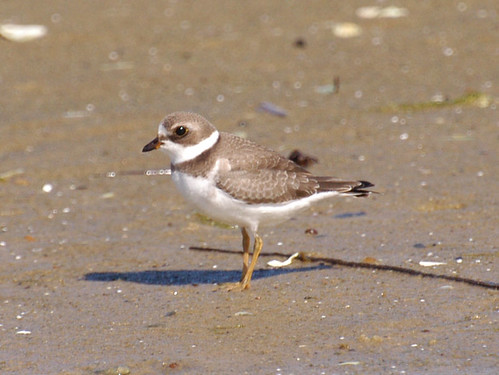
What makes shorebirds impossible is not just the five radically different plumage's per bird, or the fact that they are changing drastically from minute to minute right when I am trying to ID them.
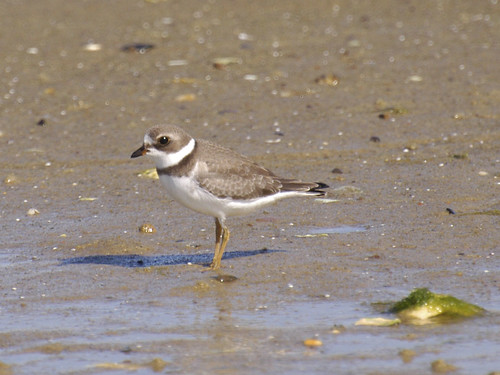
The problem is not necessarily the effects of molting that makes every single little bird look fundamentally different from the guidebook pictures.
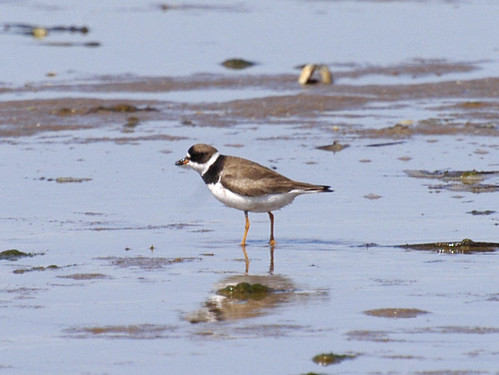
It is not really related to the difficulty of judging a bird's size across miles of beach and endless ocean. Or the way the sunlight reflecting off sand and water can change a bird's colors.

Those are all major problems, at least for me. But the real impossibility arises when you also have ten or twenty species that are VIRTUALLY IDENTICAL on top of all the above!

I am starting to suspect they aren't really distinct species after all! The birds are interbreeding like crazy and someone diabolical is snickering madly at those of us who try and ID a particular peep by name! (PS. If you are learning your shorebirds after decades of dismissively lumping them together as "stupid peeps," I suggest you stay away from the book "Shorebirds of North America, Europe, and Asia." Way too many identical birds you don't need to know about).

I did learn to scrutinize a bird's feet from that book. Feet are very important when trying to ID a bird that was brown yesterday and is white this afternoon! You can eliminate species by the dozens just by noting whether or not there is a hind toe, how big the toe is (if it exists), and whether the bird has a little bit of webbing between the toes. Partial webbing translates into "semi - palmated"; hence the semipalmated plover and sandpiper. Semipalmated plovers are by far the most common around here right now. They have orange legs, black and orange bills, and a variety of colors elsewhere depending on age, etc.

Only this one doesn't have orange legs. No orange on the bill, either. I have five pictures of this guy; from all angles and facing all directions - and his legs are definitely gray or black and his bill is definitely all black.
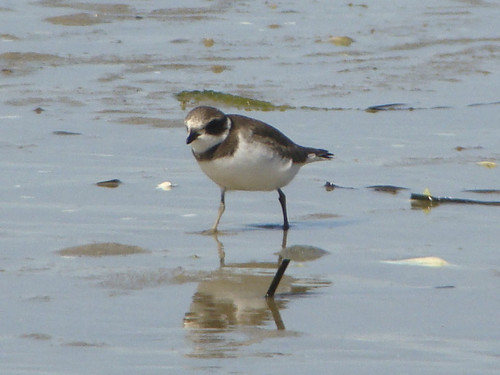
So, what the hell kind of bird is this? A juvenile something with dark, really plain feathers and grey legs and black bill is not your average plover.

I refuse to believe this is yet another once-in-a-lifetime bird. I'm ready to toss the images and forget I saw this guy at all. But first I have to scrutinize all 1200 pictures again (yes, 1200 pictures in one day. Pete took about 600 and so did I. That's how we do it.) So, three hours later what do I discover?
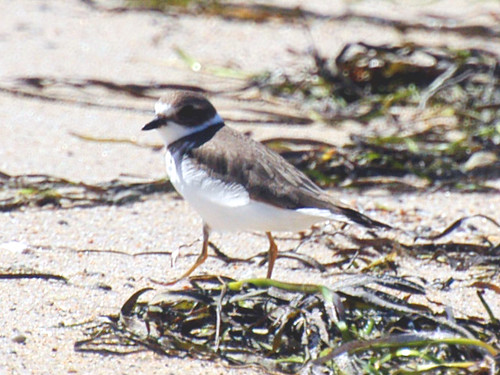
I took a picture of a plover just like that one 15 minutes before Pete took his. In this angle and with this light and this camera, I see that the bird's legs were dirty! They are grey in front and orange behind! Even if it is not the same bird, the same thing probably happened to that little guy! No doubt his mouth is dirty, too. Mystery solved!

Damned if those aren't semipalmated feet he got there, too! Can you believe it!

Nice photos Susan, and a good summary of the challenge of shorebirding. Add to that, when you don't live close to the shore, you only get to do shorebirding a very few times a year, so experience is hard come by. I like to tell myself that is the fun of shorebirds but ... you're smart to use as case in point the SP plover, because that is one of the "easy" ones ... unless something similar from Europe shows up, probably to go unidentified by me.
ReplyDeletehahahaaa....you made me laugh......
ReplyDelete(I like the sweet expression on the first bird!)
You must have a great backyard,stunning images.
ReplyDeleteJohn.